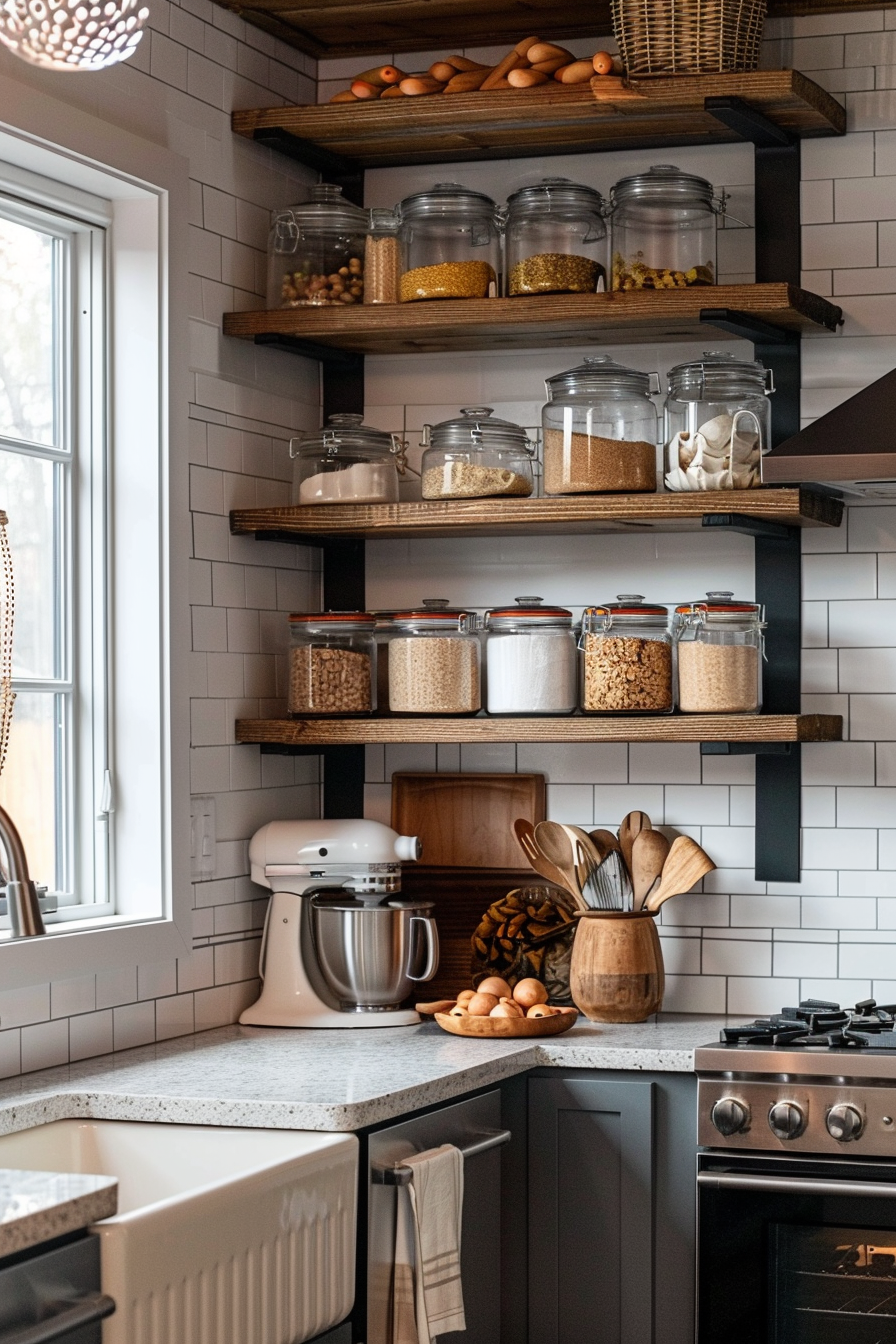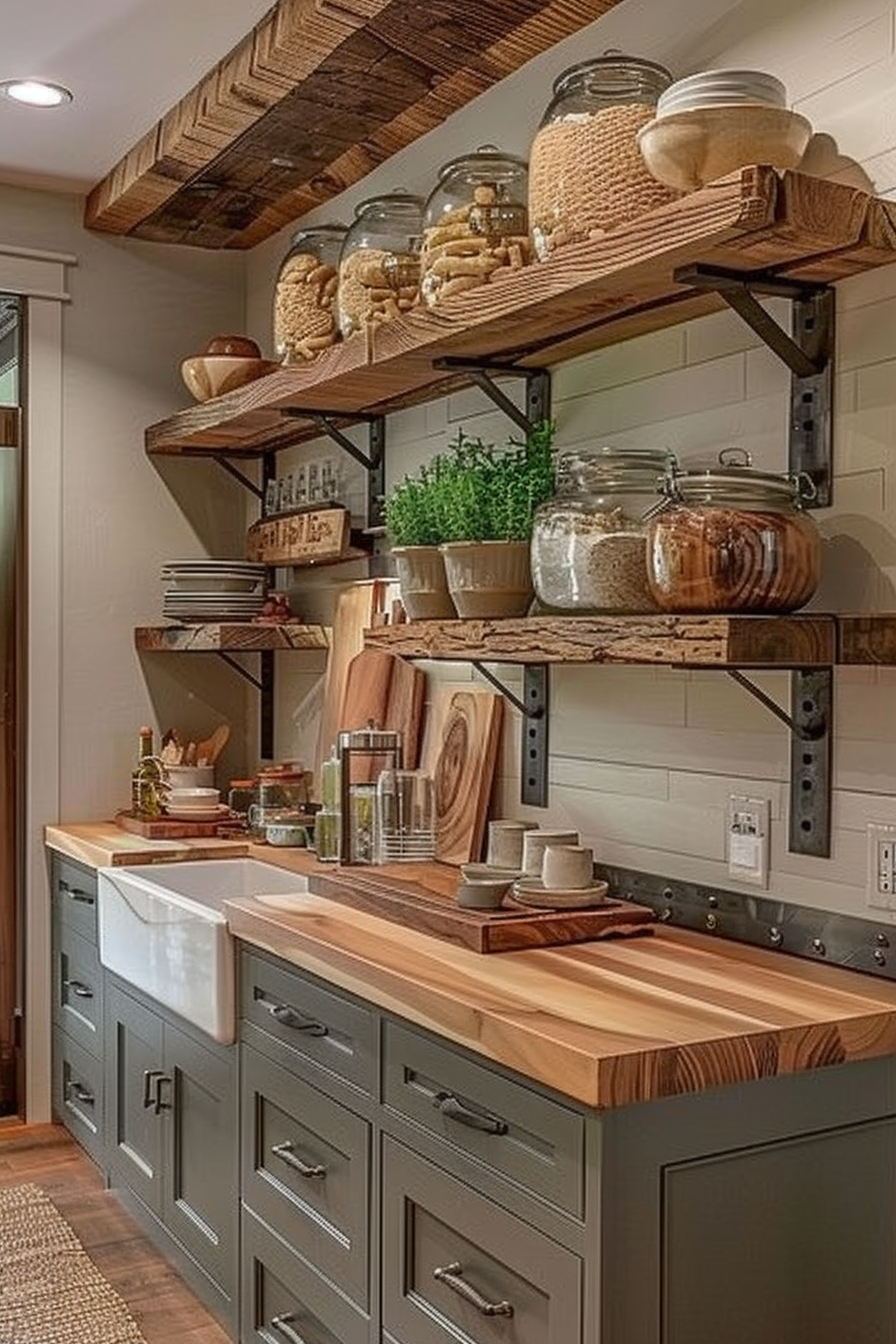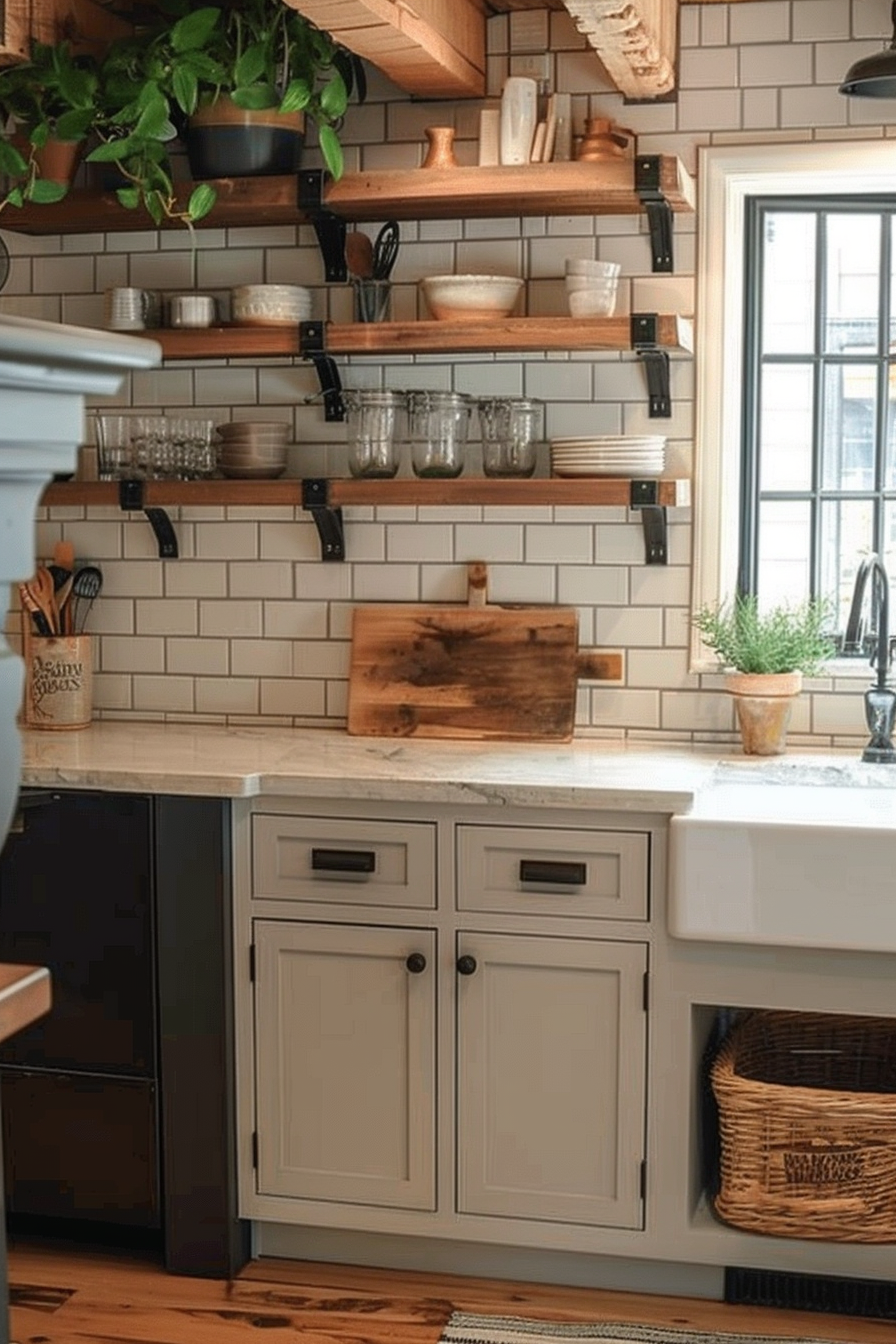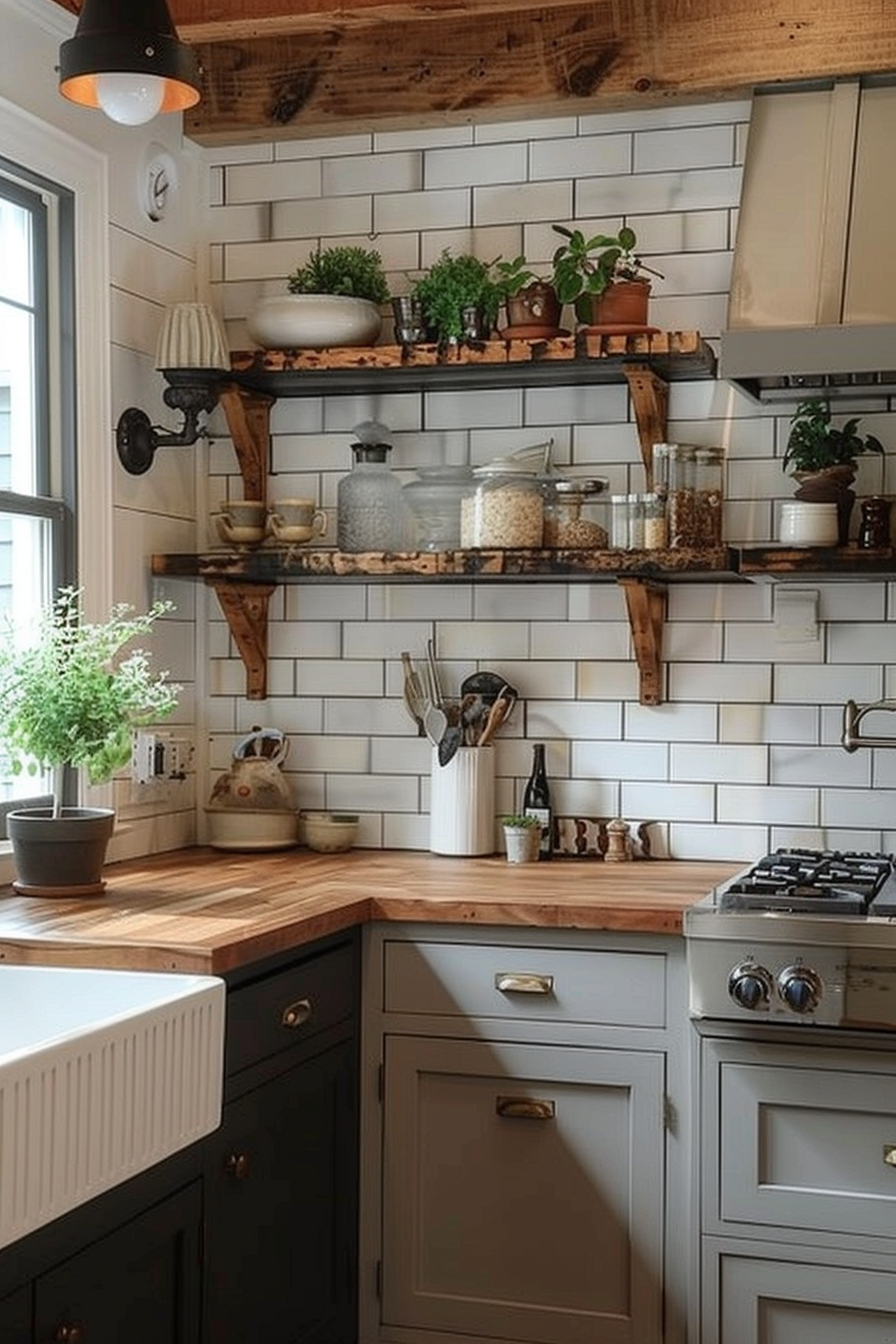Maximize both style and functionality in your farmhouse kitchen with floating shelves. Explore creative ways to display and organize kitchen essentials while adding a touch of rustic charm to your culinary space.








































Follow Quiet Minimal on Pinterest for more home design tips and inspiration.


